230 results found for 'Model'. Prev |1|2|3|4|5|6|7|8|9|10 | Next | View 100 per page
Low relevance matches: 109 other results may be of interest to you. Show low relevance matches
Atomic Models - All matter is made of atoms which are composed of protons, neutrons and electrons; natural radioactivity arises from the decay of nuclei in atoms ACSSU182 Year 9 Physical Sciences
Energy Transfer - Energy transfer through different mediums can be explained using wave and particle models ACSBL029 Year 11 Biodiversity and the interconnectedness of life
Ecosystem dynamics - Models of ecosystem interactions (for example, food webs, successional models) can be used to predict the impact of change and are based on interpretation of and extrapolation from sample data (for example, data derived from ecosystem surveying techniques ACSBL085 Year 12 Heredity and continuity of life
DNA genes and the continuity of life - Frequencies of genotypes and phenotypes of offspring can be predicted using probability models, including Punnett squares, and by taking into consideration patterns of inheritance, including the effects of dominant, autosomal and sex-linked alleles and mu ACSBL110 Year 12 Maintaining the internal environment
Homeostasis - Homeostasis involves a stimulus response model in which change in external or internal environmental conditions is detected and appropriate responses occur via negative feedback; in vertebrates, receptors and effectors are linked via a control centre by n ACSCH018 Year 11 Chemical fundamentals
Properties and structure of atoms - Atoms can be modelled as a nucleus surrounded by electrons in distinct energy levels, held together by electrostatic forces of attraction between the nucleus and electrons; atoms can be represented using electron shell diagrams (all electron shells or val ACSCH032 Year 11 Chemical fundamentals
Properties and structure of materials - The characteristic properties of metals (for example, malleability, thermal conductivity, electrical conductivity) are explained by modelling metallic bonding as a regular arrangement of positive ions (cations) made stable by electrostatic forces of attra ACSCH056 Year 11 Molecular interactions and reactions
Intermolecular forces and gases - The shapes of molecules can be explained and predicted using three dimensional representations of electrons as charge clouds and using valence shell electron pair repulsion (VSEPR) theory ACSCH099 Year 12 Equilibrium acids and redox reactions
Chemical equilibrium systems - The relationship between acids and bases in equilibrium systems can be explained using the Brønsted Lowry model and represented using chemical equations that illustrate the transfer of hydrogen ions ACSCH103 Year 12 Equilibrium acids and redox reactions
Oxidation and reduction - A range of reactions, including displacement reactions of metals, combustion, corrosion, and electrochemical processes, can be modelled as redox reactions involving oxidation of one substance and reduction of another substance ACSCH104 Year 12 Equilibrium acids and redox reactions
Oxidation and reduction - Oxidation can be modelled as the loss of electrons from a chemical species, and reduction can be modelled as the gain of electrons by a chemical species; these processes can be represented using half equations ACSPH063 Year 11 Linear Motion and Waves
Linear motion and force - Newton’s Three Laws of Motion describe the relationship between the force or forces acting on an object, modelled as a point mass, and the motion of the object due to the application of the force or forces ACSPH076 Year 11 Linear Motion and Waves
Waves - A wave model explains a wide range of lightrelated phenomena including reflection, refraction, total internal reflection, dispersion, diffraction and interference; a transverse wave model is required to explain polarisation ACSPH139 Year 12 Revolutions in modern physics
Quantum theory - The Bohr model of the hydrogen atom integrates light quanta and atomic energy states to explain the specific wavelengths in the hydrogen spectrum and in the spectra of other simple atoms; the Bohr model enables line spectra to be correlated with atomic en ACSCH031 Year 11 Chemical fundamentals
Properties and structure of materials - The properties of ionic compounds (for example, high melting point, brittleness, ability to conduct electricity when liquid or in solution) are explained by modelling ionic bonding as ions arranged in a crystalline lattice structure with forces of attract ACSPH071 Year 11 Linear Motion and Waves
Waves - The mechanical wave model can be used to explain phenomena related to reflection and refraction ACSPH074 Year 11 Linear Motion and Waves
Waves - Light exhibits many wave properties; however, it cannot be modelled as a mechanical wave because it can travel through a vacuum ACSPH075 Year 11 Linear Motion and Waves
Waves - A ray model of light may be used to describe reflection, refraction and image formation from lenses and mirrors ACSPH140 Year 12 Revolutions in modern physics
Quantum theory - On the atomic level, energy and matter exhibit the characteristics of both waves and particles

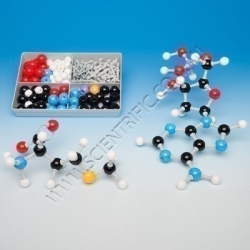
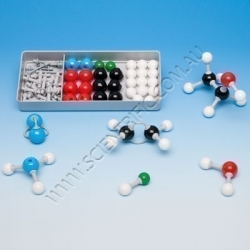
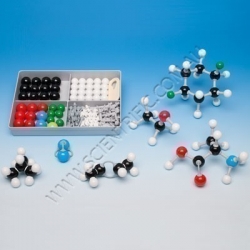
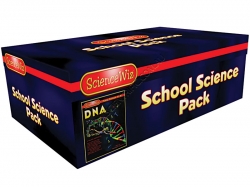
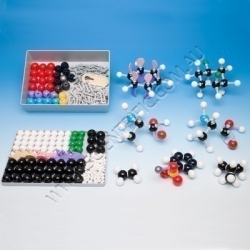
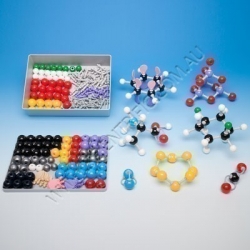
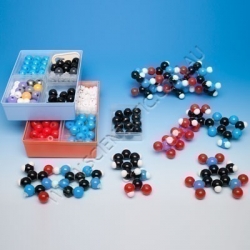
230 results found for 'Model'. Prev |1|2|3|4|5|6|7|8|9|10 | Next | View 100 per page
Low relevance matches: 109 other results may be of interest to you. Show low relevance matches
Curriculum resources related to 'Model'
ACSSU177 Year 9 Chemical SciencesAtomic Models - All matter is made of atoms which are composed of protons, neutrons and electrons; natural radioactivity arises from the decay of nuclei in atoms ACSSU182 Year 9 Physical Sciences
Energy Transfer - Energy transfer through different mediums can be explained using wave and particle models ACSBL029 Year 11 Biodiversity and the interconnectedness of life
Ecosystem dynamics - Models of ecosystem interactions (for example, food webs, successional models) can be used to predict the impact of change and are based on interpretation of and extrapolation from sample data (for example, data derived from ecosystem surveying techniques ACSBL085 Year 12 Heredity and continuity of life
DNA genes and the continuity of life - Frequencies of genotypes and phenotypes of offspring can be predicted using probability models, including Punnett squares, and by taking into consideration patterns of inheritance, including the effects of dominant, autosomal and sex-linked alleles and mu ACSBL110 Year 12 Maintaining the internal environment
Homeostasis - Homeostasis involves a stimulus response model in which change in external or internal environmental conditions is detected and appropriate responses occur via negative feedback; in vertebrates, receptors and effectors are linked via a control centre by n ACSCH018 Year 11 Chemical fundamentals
Properties and structure of atoms - Atoms can be modelled as a nucleus surrounded by electrons in distinct energy levels, held together by electrostatic forces of attraction between the nucleus and electrons; atoms can be represented using electron shell diagrams (all electron shells or val ACSCH032 Year 11 Chemical fundamentals
Properties and structure of materials - The characteristic properties of metals (for example, malleability, thermal conductivity, electrical conductivity) are explained by modelling metallic bonding as a regular arrangement of positive ions (cations) made stable by electrostatic forces of attra ACSCH056 Year 11 Molecular interactions and reactions
Intermolecular forces and gases - The shapes of molecules can be explained and predicted using three dimensional representations of electrons as charge clouds and using valence shell electron pair repulsion (VSEPR) theory ACSCH099 Year 12 Equilibrium acids and redox reactions
Chemical equilibrium systems - The relationship between acids and bases in equilibrium systems can be explained using the Brønsted Lowry model and represented using chemical equations that illustrate the transfer of hydrogen ions ACSCH103 Year 12 Equilibrium acids and redox reactions
Oxidation and reduction - A range of reactions, including displacement reactions of metals, combustion, corrosion, and electrochemical processes, can be modelled as redox reactions involving oxidation of one substance and reduction of another substance ACSCH104 Year 12 Equilibrium acids and redox reactions
Oxidation and reduction - Oxidation can be modelled as the loss of electrons from a chemical species, and reduction can be modelled as the gain of electrons by a chemical species; these processes can be represented using half equations ACSPH063 Year 11 Linear Motion and Waves
Linear motion and force - Newton’s Three Laws of Motion describe the relationship between the force or forces acting on an object, modelled as a point mass, and the motion of the object due to the application of the force or forces ACSPH076 Year 11 Linear Motion and Waves
Waves - A wave model explains a wide range of lightrelated phenomena including reflection, refraction, total internal reflection, dispersion, diffraction and interference; a transverse wave model is required to explain polarisation ACSPH139 Year 12 Revolutions in modern physics
Quantum theory - The Bohr model of the hydrogen atom integrates light quanta and atomic energy states to explain the specific wavelengths in the hydrogen spectrum and in the spectra of other simple atoms; the Bohr model enables line spectra to be correlated with atomic en ACSCH031 Year 11 Chemical fundamentals
Properties and structure of materials - The properties of ionic compounds (for example, high melting point, brittleness, ability to conduct electricity when liquid or in solution) are explained by modelling ionic bonding as ions arranged in a crystalline lattice structure with forces of attract ACSPH071 Year 11 Linear Motion and Waves
Waves - The mechanical wave model can be used to explain phenomena related to reflection and refraction ACSPH074 Year 11 Linear Motion and Waves
Waves - Light exhibits many wave properties; however, it cannot be modelled as a mechanical wave because it can travel through a vacuum ACSPH075 Year 11 Linear Motion and Waves
Waves - A ray model of light may be used to describe reflection, refraction and image formation from lenses and mirrors ACSPH140 Year 12 Revolutions in modern physics
Quantum theory - On the atomic level, energy and matter exhibit the characteristics of both waves and particles
Products related to 'Model'
Molymod Plastic Box 4 Compartments 30mm Deep
MOLYMOD FOUR COMPARTMENT STORAGE BOX
A sturdy lidded Molymod® grey plastic box with four compartments for storing your Molymod® molecular model parts.
A quality, genuine Molymod® product fully compatible with other Molymod® products.
Order code: MB-30
Molymod Plastic Box Single Compartment
MOLYMOD SINGLE COMPARTMENT STORAGE BOX
A sturdy lidded Molymod® grey plastic box with a single 55mm deep compartment for storing your Molymod® molecular model parts.
A quality, genuine Molymod® product fully compatible with other Molymod® products....
Order code: MB-55

Vernier Watts Up Pro Power Monitor
WATTS UP PRO INTERNATIONAL MODEL
Watts Up Pro is a device that measures real-time electricity usage and cost. It auto-IDs and connects to a USB port on your computer or LabQuest. Logger Pro 3.8 or LabQuest App 1.3 or newer are required.
When connected, Watts Up Pro can...
Order code: WU-PRO-AU
Student Lab Guides for Biomechanics
STUDENT LAB GUIDES
Student laboratory guide book for use with the Biomechanical Arm, Biomechanical Leg and The Heart as a Pump Model. Pack of 24 books.
Order code: 0650-23

Molymod Biochemistry Student Set
A genuine Molymod® product NOT a cloned look-a-like.
Supplied in a sturdy 4 compartment plastic box with comprehensive illustrated instructions. Contains a total of 72 'atoms' plus links and a link remover tool as listed below:
12 x Carbon, 4-holes tetrahedral, black
...
Order code: MMS-010

Molymod Elementary Organic Set
A genuine Molymod® product NOT a cloned look-a-like.
Supplied in a sturdy 2 compartment plastic box. Contains a total of 30 'atoms' plus links as listed below:
14 x Hydrogen, 1-hole, white
6 x Carbon, 4-holes tetrahedral, black
2 x Nitrogen, 4-holes tetrahedral, blue...
Order code: MMS-015

Molymod Introductory Student Set 48 Atoms
MOLYMOD INTRODUCTORY STUDENT SET
Supplied in a lidded 4-compartment sturdy plastic box, this student introductory Molymod® set contains a total of 48 atoms plus links and a link remover tool. Instructions are included for building over 30 molecules.
A quality, genuine...
Order code: MMS-001

ScienceWiz Teacher 6 Pack DNA
Make the DNA revolution accessible! Central concepts in molecular biology become child's play in this cutting edge science kit. Discoveries in molecular biology are among the most important scientific advancements of our time.
This ScienceWiz™ Teacher's Pack includes enough...
Order code: SCW9911
ScienceWiz DNA Kit Sample
Make the DNA revolution accessible! Central concepts in molecular biology become child's play in this cutting edge science kit. Discoveries in molecular biology are among the most important scientific advancements of our time.
This sample kit enables a student to explore and d...
Order code: SCW9911-S

Molymod Organic Teachers Set - 111 Atoms
MOLYMOD ORGANIC CHEMISTRY TEACHERS SET
Supplied in a lidded large-compartment, sturdy plastic box, this organic chemistry Molymod® set contains a total of 111 atoms plus links.
Instructions are included for building over 30 molecules.
A quality, genuine Molymod® at...
Order code: MMS-003

Molymod Organic/Inorganic Teachers Set - 108 Atoms
A genuine Molymod® product NOT a cloned look-a-like.
Supplied in a sturdy plastic box with product information and instructions for building over 30 molecules. Contains a total of 106 'atoms' plus links as listed below.
Atoms - 108:
14 x Carbon, 4-holes tetra...
Order code: MMS-004

Molymod Biochemistry Teachers Set
A genuine Molymod® product NOT a cloned look-a-like.
Supplied in two large plastic boxes containing a total of 257 atom parts plus links and link remover tools as listed below:
42 x Carbon, 4-holes tetrahedral, black
24 x Carbon, 3-holes trigonal, black
2 x Carbon, ...
Order code: MMS-007
Molymod Halogen Green 1 Hole 20mm
20mm MOLYMOD HALOGEN ATOM 1 HOLE
A pack of 10 green Halogen atoms 20mm diameter and with 1 hole.
A quality, genuine Molymod® atom fully compatible with other Molymod® products.
Order code: MA-101-10
Molymod Metal Grey 1 Hole 20mm
20mm MOLYMOD METAL ATOM 1 HOLE
A pack of 10 grey Metal atoms 20mm diameter and with 1 hole.
A quality, genuine Molymod® atom fully compatible with other Molymod® products.
Order code: MA-102-10
Molymod Oxygen Red 1 Hole 20mm
20mm MOLYMOD OXYGEN ATOM 1 HOLE
A pack of 10 red oxygen atoms 20mm diameter and with one hole denoting a double bonded oxygen atom.
The smaller diameter represents the shorter atomic radius.
A quality, genuine Molymod® atom fully compatible with other Molymod® pr...
Order code: MA-103-10
Molymod Nitrogen Blue 1 Hole 20mm
20mm MOLYMOD NITROGEN ATOM 1 HOLE
A pack of 10 blue Nitrogen atoms 20mm diameter and with 1 hole.
A quality, genuine Molymod® atom fully compatible with other Molymod® products.
Order code: MA-104-10
Molymod Hydrogen White 1 Hole 17mm
17mm MOLYMOD HYDROGEN ATOM 1 HOLE
A pack of 10 white Hydrogen atoms 17mm diameter and with 1 hole
A quality, genuine Molymod® product fully compatible with all other genuine Molymod® products.
Order code: MA-110-10
Molymod Halogen Green 1 Hole 17mm
17mm MOLYMOD HALOGEN ATOM 1 HOLE
A pack of 10 green Halogen atoms 17mm diameter and with 1 hole.
A quality, genuine Molymod® atom fully compatible with other Molymod® products.
Order code: MA-111-10
Molymod Metal Grey 1 Hole 17mm
17mm MOLYMOD METAL ATOM 1 HOLE
A pack of 10 grey Metal atoms 17mm diameter and with 1 hole.
A quality, genuine Molymod® atom fully compatible with other Molymod® products.
Order code: MA-112-10
Molymod Bromine Orange 1 Hole 17mm
17mm MOLYMOD BROMINE ATOM 1 HOLE
A pack of 10 orange Bromine atoms 17mm diameter and with 1 hole.
A quality, genuine Molymod® atom fully compatible with other Molymod® products.
Order code: MA-114-10
Molymod Iodine Purple 1 Hole 17mm
17mm MOLYMOD IODINE ATOM 1 HOLE
A pack of 10 purple Iodine atoms 17mm diameter and with 1 hole.
A quality, genuine Molymod® atom fully compatible with other Molymod® products.
Order code: MA-115-10
Molymod Fluorine Light Green 1 Hole 17mm
17mm MOLYMOD FLUORINE ATOM 1 HOLE
A pack of 10 light green Fluorine atoms 17mm diameter and with 1 hole.
A quality, genuine Molymod® atom fully compatible with other Molymod® products.
Order code: MA-116-10
Molymod Halogen Green 1 Hole 23mm
23mm MOLYMOD HALOGEN ATOM 1 HOLE
A pack of 10 green Halogen atoms 23mm diameter and with 1 hole.
A quality, genuine Molymod® atom fully compatible with other Molymod® products.
Order code: MA-120-10
Molymod Oxygen Red 1 Hole 23mm
23mm MOLYMOD OXYGEN ATOM 1 HOLE
A pack of 10 red oxygen atoms 23mm diameter and with one hole. This univalent atom is used for models where there is a carboxyl group and the other oxygen is divalent but both are resonant, sharing the hydrogen.
A quality, genuine Molymo...
Order code: MA-121-10
Molymod Hydrogen White 1 Hole 19mm Molydome
19mm MOLYMOD HYDROGEN 1 HOLE MOLYDOME™
A pack of 10 white Hydrogen atoms, 19mm diameter half dome shells.
A quality, genuine Molymod® product fully compatible with all other genuine Molymod® products.
Order code: MA-150-10
230 results found for 'Model'. Prev |1|2|3|4|5|6|7|8|9|10 | Next | View 100 per page



 ,
,